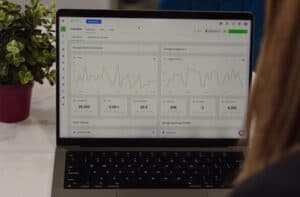
31 Oct Google’s New Mobile Ranking Update: What It Means for Your Website in 2025
In the ever-evolving world of digital marketing, staying on top of Google’s algorithm updates can feel like trying to hit a moving target. Each year brings new ranking factors and performance benchmarks that reshape the online landscape. In 2025, Google’s latest mobile ranking update is making headlines – and for good reason.
This update prioritizes mobile-first experiences more than ever before, putting speed, usability, and content quality at the forefront. If your website isn’t optimized for mobile users, you could be missing out on both traffic and conversions.
Let’s break down what’s new in Google’s mobile ranking update, why it matters, and how your business can adapt to stay competitive this year.
Why Google Keeps Updating Its Algorithm
Google’s mission has always been to organize the world’s information and make it universally accessible and useful. Over the years, this has meant fine-tuning its ranking systems to favor websites that deliver the best possible experience to users – especially those browsing on mobile devices.
With over 65% of global web traffic now coming from mobile, Google’s focus has naturally shifted to ensuring mobile users enjoy fast, intuitive, and high-quality browsing experiences. The 2025 update builds on that foundation, refining how Google evaluates mobile usability and performance across websites.

What’s New in the 2025 Mobile Ranking Update
This year’s update isn’t just another tweak; it’s a significant shift in how websites are measured for search visibility. Here are the key elements you need to know:
1. Mobile Experience Is Now the Primary Ranking Signal
While Google has used mobile-first indexing for several years, the 2025 update takes it a step further. Mobile usability isn’t just a factor; it’s the core foundation of ranking evaluation.
If your desktop site looks great but your mobile site loads slowly or has poor navigation, your rankings could take a hit. Google now prioritizes:
- Seamless navigation and accessibility on small screens
- Readable text without zooming
- Properly sized buttons and links
- Minimal intrusive pop-ups or interstitials
Essentially, if your website isn’t built for mobile-first browsing, Google sees it as less relevant, even if it performs well on desktop.
2. Page Speed and Core Web Vitals Still Matter
The 2025 update places increased emphasis on Core Web Vitals, particularly on mobile devices. These metrics measure how quickly your site loads, becomes interactive, and remains visually stable as content appears.
The three primary metrics remain:
- Largest Contentful Paint (LCP): How long it takes for the main content to load
- First Input Delay (FID): How responsive your site is when users interact
- Cumulative Layout Shift (CLS): How stable your layout is as the page loads
Google’s new update adds an additional layer of evaluation, factoring in real-world mobile network performance. If your site performs poorly on slower mobile connections, expect your rankings to reflect that.
3. AI-Powered Content Evaluation on Mobile
Artificial intelligence plays a bigger role than ever in how Google analyzes web pages. The 2025 update includes advanced AI-based content interpretation, which assesses not only what your content says but how it performs on mobile screens.
Google’s algorithms now evaluate:
- How readable and accessible your content is on mobile devices
- Whether visuals (like videos or infographics) slow down performance
- How well your content adapts to voice search and conversational queries
In other words, mobile content design and clarity are now part of SEO. Long paragraphs, heavy graphics, and unoptimized formatting could lower your visibility even if your keyword targeting is strong.
4. Accessibility and UX Are Official Ranking Factors
Accessibility has moved from a “nice-to-have” to a ranking necessity. Google’s 2025 update explicitly prioritizes websites that follow Web Content Accessibility Guidelines (WCAG) standards.
This means websites that:
- Use proper color contrast for readability
- Include alt text for images
- Offer clear navigation and ARIA labels for screen readers
- Maintain consistent structure and headings
If your site is accessible, Google views it as more user-friendly and therefore more valuable to rank.
5. Local Search Optimization Has a Mobile Twist
For businesses with physical locations, the mobile ranking update heavily impacts local SEO. Google is emphasizing proximity-based results for mobile searches, especially for “near me” queries.
That means your Google Business Profile, mobile load speed, and local keywords matter more than ever. If your local pages aren’t optimized for mobile, or your contact information isn’t easily clickable, you could lose ground to nearby competitors.

How to Optimize Your Website for the 2025 Update
Knowing what’s changing is only half the battle; the real advantage comes from taking action. Here’s how to ensure your website meets Google’s new mobile-first standards and stays ahead of the curve.
1. Run a Mobile-Friendly Audit
Start with Google’s Mobile-Friendly Test tool or PageSpeed Insights. These tools identify performance issues like small text, unclickable buttons, or slow loading times.
Fixing these basic usability issues can have an immediate impact on both user satisfaction and ranking potential.
2. Simplify Your Design
Modern mobile design is all about clarity and speed. Use clean layouts, minimal navigation, and high-contrast colors. Avoid cluttered visuals or heavy animations that slow loading times.
A clean, simple homepage and clear call-to-action (CTA) make your site easier to navigate on any device and keep visitors engaged longer.
3. Optimize Images and Videos
Large images and auto-playing videos are common culprits for slow mobile performance. Compress files using modern formats (like WebP for images) and lazy-load content so it appears as users scroll.
Also, ensure that your videos are responsive, scaling properly for different screen sizes, and don’t start with sound by default, which can drive mobile users away.
4. Review Your Content for Mobile Readability
Mobile users tend to skim, not read. Break up long paragraphs into shorter sections, use headers and bullet points, and make CTAs visible without scrolling.
Also, consider how your headlines appear in mobile search results. A concise, benefit-driven title can improve click-through rates and keep users on your page.
5. Improve Technical SEO and Site Structure
Technical SEO plays a major role in how Google crawls and ranks your site. Focus on:
- Creating a mobile sitemap that prioritizes key pages
- Using HTTPS for security
- Ensuring internal links are mobile-friendly and easy to tap
- Reducing redirects and fixing broken links
Even small technical issues can impact how well your site performs in Google’s mobile ranking algorithm.
6. Don’t Forget About Voice Search
With the rise of voice assistants, more mobile searches are conversational. Optimize for voice search by using natural language phrases and question-based keywords (e.g., “Where’s the best pizza near me?”).
Creating FAQ sections and short, direct answers within your content can help your site appear in voice search results and featured snippets.
7. Monitor Your Metrics Regularly
SEO is never “set it and forget it.” Track your performance in Google Search Console and analytics platforms to monitor changes in traffic, bounce rate, and conversions.
If you notice dips in visibility, review your Core Web Vitals, user engagement, and page performance metrics on mobile. Small, ongoing adjustments will help you stay compliant with future updates, too.

Your Website’s Mobile Experience Is Your Brand Experience
In 2025, your mobile website isn’t just an extension of your desktop site… it is your site. For many users, their first impression of your business happens on a phone, not a computer.
That means every second, click, and scroll counts. A website that loads fast, looks great, and works smoothly on mobile builds trust and earns higher rankings from Google.
Ready to Future-Proof Your Website? Let’s Talk.
Google’s 2025 mobile ranking update proves one thing: the future of SEO is mobile-first. If your website isn’t keeping up, now is the time to act.
At McWilliams Media, we specialize in helping businesses create websites that perform beautifully across every device. From mobile optimization and SEO strategy to design updates and content improvements, our team ensures your digital presence meets Google’s latest standards — and exceeds user expectations.
Let’s make your website faster, smarter, and ready to rank higher in 2025. Contact McWilliams Media today to start your mobile-friendly website transformation.








